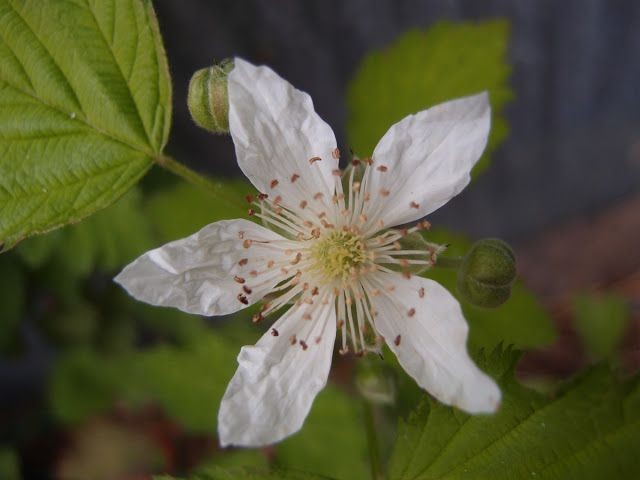Salmonberry
(Rubus deliciosus)

Description
Rubus spectabilis, the salmonberry, is a species of bramble in the rose family Rosaceae, native to the west coast of North America from west central Alaska to California, inland as far as Idaho. Like many other species in the genus Rubus, the salmonberry plant bears edible fruit, typically yellow-orange or red in color, resembling raspberries in appearance. Rubus spectabilis is a deciduous, rhizomatous shrub growing to 1–4 m (3–13 ft) tall, with perennial (not biennial) woody stems that are covered with fine prickles, especially on new growth. The plant has golden or yellowish brown erect or arching stems (also known as "canes") that often form thickets, like many other brambles in the genus Rubus. The leaves are alternate, trifoliate (with three leaflets), 7–22 cm (3–8+1⁄2 in) long and typically ovate in shape, with the terminal leaflet being larger than the two side leaflets, which are sometimes shallowly lobed. The margins of the leaflets are doubly serrate. The leaves are also stipulate and are smooth to slightly hairy on the top surface, compared to the underside, which are typically more pale and hairy. The flowers are 2–3 cm (3⁄4–1+1⁄4 in) in diameter, with a calyx of five hairy sepals and five pinkish-purple petals; they are produced from early spring to early summer, either singly or in clusters of 2 or 3. The flowers are perfect (bisexual), containing 75–100 stamens and many individual pistils with superior ovaries. The berries ripen from early May to late July in most of the Pacific Northwest (later in cooler climates), and resemble large shiny yellow to orange-red raspberries,1.5–2 cm (1⁄2–3⁄4 in) long. However, botanically speaking, the salmonberry is not a true berry, but instead an aggregate fruit made of many smaller drupelets. The fruits of the salmonberry plant exhibit polymorphism, as berries are often either red in color or a yellow-orange color. Studies have found that although both red and yellow-orange morphs have similar physical qualities, the red berries are more commonly consumed by birds, although this is likely not a strong enough selective pressure to determine color morph distribution alone; factors such as soil type (which affects germination), along with other unstudied factors are more likely responsible for the color polymorphism.
Taxonomic tree:







